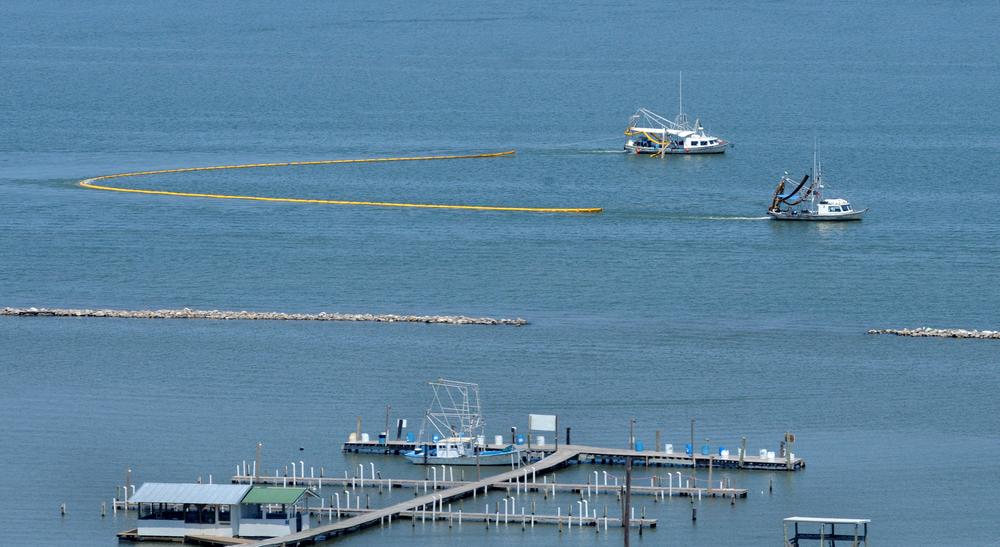Advertisement
Cap Removed From Gushing Oil Well

A containment cap over the gushing oil well in the Gulf of Mexico has been removed so a better one can be installed, a BP official said.
BP spokesman Mark Proegler said the cap was removed at about 12:30 p.m. CDT on Saturday.
As a result, oil was flowing into the Gulf without being collected from the well head. Engineers will use robots to try and fit a tighter dome over the leak that will funnel more oil to collection ships on the surface a mile above. The next steps will prepare the seal for the new cap.
If all goes according to plan, the tandem of the tighter cap and the surface ships could keep all the oil from polluting the fragile Gulf within the next few days.
"Over the next four to seven days, depending on how things go, we should get that sealing cap on. That's our plan," Kent Wells, a BP senior vice president, said Saturday as he explained the procedure.
It would be only a temporary solution to the catastrophe unleashed by a drilling rig explosion nearly 12 weeks ago. It won't plug the busted well and it remains uncertain that it will succeed.
With the cap removed, oil will flow mostly unabated into the water for about 48 hours — long enough for as much as 5 million gallons to gush out — until the new cap is installed.
The hope for a permanent solution remains with two relief wells intended to plug it completely far beneath the seafloor.
"I use the word 'contained,'" retired Coast Guard Adm. Thad Allen said Friday. "'Stop' is when we put the plug in down below."
It could still be another week before they really know if the cap is containing most of the spill, Coast Guard Capt. James McPherson said Saturday. Testing has to be done on the new cap if and when it's in place to make sure it can withstand the pressure of the gushing oil.
Workers are taking advantage of a window of good weather following weeks of delays caused by choppy seas.
The removed cap was installed June 4, but because it had to be fitted over a jagged cut in the well pipe, it allowed some crude to escape. The new cap — dubbed "Top Hat Number 10" — follows 80 days of failures to contain or plug the leak.
BP PLC first tried a huge containment box also referred to as a top hat, but icelike crystals quickly clogged the contraption in the cold depths. The oil giant then tried to shoot heavy drilling mud into the hole to hold down the flow so it could then insert a cement plug. After the so-called "top kill," engineers tried a "junk shot" — using the undersea robots to try and stuff carefully selected golf balls and other debris to plug the leak. That also met failure.
Meanwhile Friday, BP worked to hook up another containment ship called the Helix Producer to a different part of the leaking well. The ship, which will be capable of sucking up more than 1 million gallons a day when it is fully operating, should be working by Sunday, Allen said.
The government estimates 1.5 million to 2.5 million gallons of oil a day are spewing from the well, and the old cap was collecting about 1 million gallons of that. With the new cap and the new containment vessel, the system will be capable of capturing 2.5 million to 3.4 million gallons — essentially all the leaking oil, officials said.
The plan had originally been to hook up the Helix Producer and install the new cap separately, but the favorable weather convinced officials the time was right for both operations.
"Everybody agrees we got the weather to do what we need," Allen said. He said the calm weather is expected to last seven to 10 days.
In a response late Friday to Allen's request for detailed plans about the new cap, the Helix Producer and the relief wells, BP managing director Bob Dudley said he thought the leak could be contained by Monday.
But Dudley included plans for another scenario, which includes possible problems and missteps for the installation of the cap that would push the work back until Thursday.
And the latest effort is far from a sure thing, warned Louisiana State University environmental sciences professor Ed Overton.
"Everything done at that site is very much harder than anyone expects," he said. Overton said putting on the new cap carries risks: "Is replacing the cap going to do more damage than leaving it in place, or are you going to cause problems that you can't take care of?"
Containing the leak will not end the crisis that began when the Deepwater Horizon drilling platform exploded April 20, killing 11 workers. The relief wells are still being drilled so they can inject heavy mud and cement into the leaking well to stop the flow, which is expected to be done by mid-August. Then a monumental cleanup and restoration project lies ahead.
Some people in Louisiana's oil-soaked Plaquemines Parish were skeptical that BP can contain the oil so soon.
"Too many lies from the beginning," oyster fisherman Goyo Zupanovich said while painting his boat at a marina in Empire, La. "I don't believe them anymore."
This program aired on July 10, 2010. The audio for this program is not available.